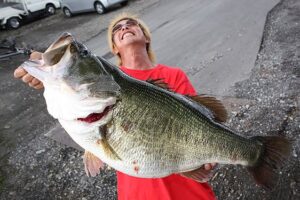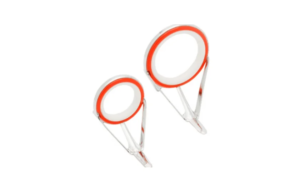How to Make Bamboo Poles in Japan
Before the graphite rod was invented by Dr. Arthour M. Howald, of Sakespeare Company, in 1947, the bamboo was the major materials for fishing rods. In the other side of the world, it was the same that the rod was made by bamboo. However the characteristics of bamboo rod in the west and in Asia were different (details are described in this article. ) The rod in the west was "a rod" which was not as flexible as a fishing rod in orient. This difference is obvious from the way of its production.
In a nutshell, bamboo rods in the west was made with combination of triangle shaped canes, after it was invented in the early 1830's. At the same period and after it, the Japanese people were using the bamboo rod made from the bare bamboo, without changing the profile of bamboo's natural shape.
The process of making bamboo poles requires a deep understanding of traditional Japanese techniques and natural materials. Below is an explanation of the general steps involved in crafting bamboo poles.
1. Selecting Bamboo
The first step is choosing the right bamboo. In Japan, species like Madake (Japanese timber bamboo, Phyllostachys bambusoides) and Hachiku (Henon bamboo, Phyllostachys nigra) are commonly used.
- Bamboo harvested in winter is preferred, as its growth has slowed, and it contains less moisture and is less prone to pests.
- Bamboo with evenly spaced nodes and minimal curvature is ideal.
To make the best bamboo for the fishing rod, some Japanese producers of bamboo cut the bamboo in the first year of its growth to make the thin long pole. There are techniques to adjust the speed of growth with scraching the bamboo's surface.
The harvested bamboo is treated with heat to take the oils on the surface away, to avoid unwanted decays. At the beginning of the drying it is green, but as the drying procees, it turns into light brown.
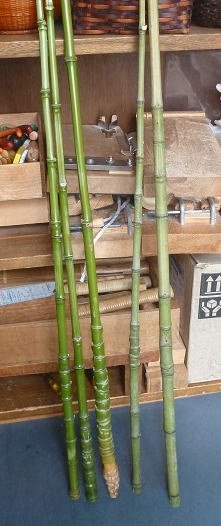
2. Drying
The harvested bamboo needs proper drying.
- Natural Drying: The bamboo is dried in a well-ventilated area for several months to a year. This method helps maintain its strength and flexibility.
- Fire Curing: Lightly heating the bamboo with fire removes excess moisture, tightens the fibers, enhances durability, and brings out its beautiful color.
Drying is very important to make the bamboo rod light, durable and flexible. It stabilizes the bending characteristics., because drying increases the tighteness of fibers. Also it is important not to make the bamboo decayed or rotten easily. It is interesting to know it as the concept of this drying looks similar to reduce the resin material in the carbon fishing rods. Well dried rods are easy to be adjusted for its actions, as it reacts to the heat easily.
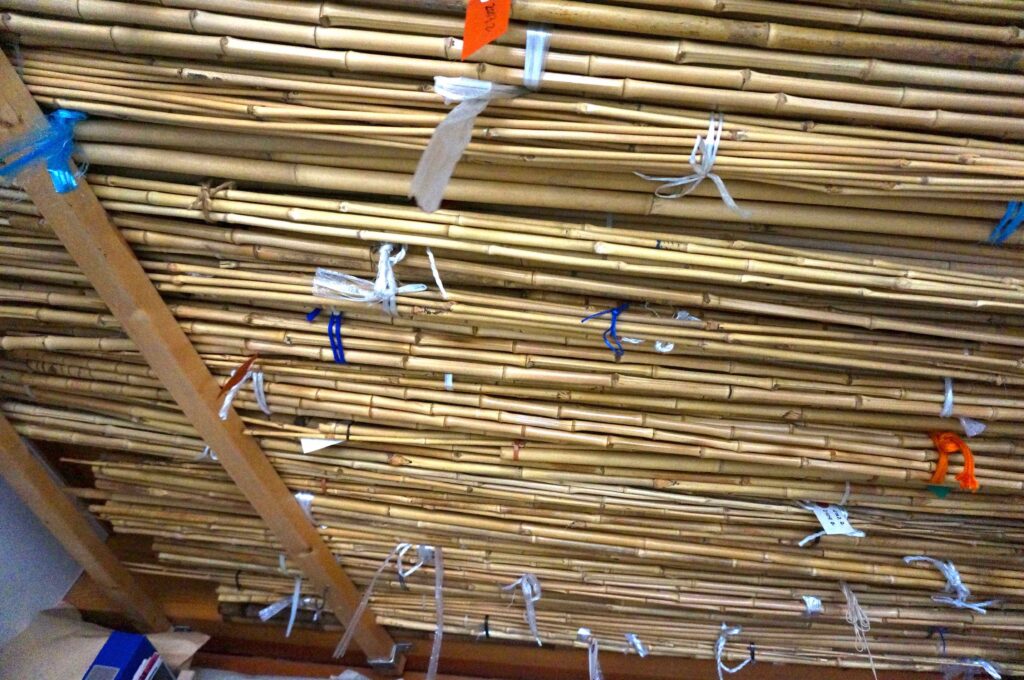
3. Shaping
Natural bends in the bamboo are corrected.
- The bamboo is gently heated and straightened using specialized tools. Heating is applied with charcoal, gas heater or steam.
- Nodes may be smoothed or shaved as needed to create an even surface.
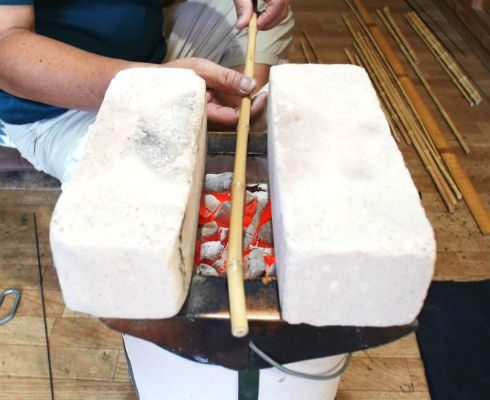
The heated bamboo would be adjusted by hand with using the wooden tools, looks like a holed board.
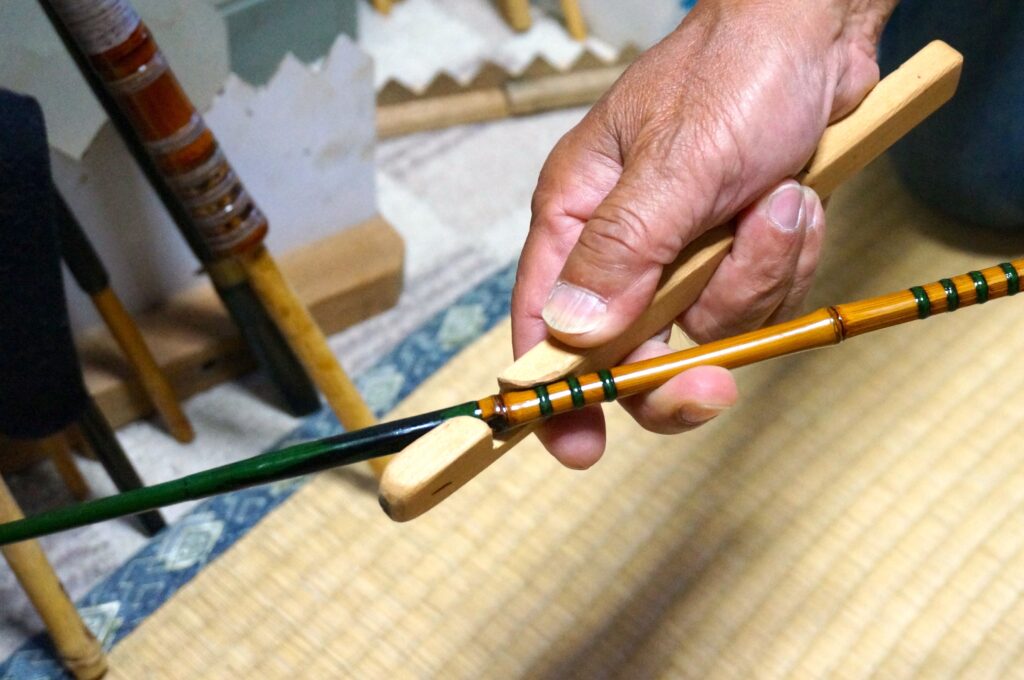
4. Pest Prevention
To protect the bamboo from pests, it undergoes treatment.
- Traditionally, the bamboo is soaked in boiling oil or pest-repellent solutions.
- In modern times, environmentally friendly chemicals may be used.
5. Finishing and Decoration
The surface of the bamboo pole is then finished.
- It is smoothed and polished to ensure a comfortable texture.
- Paint or lacquer is applied to enhance durability and aesthetics. Transparent finishes are often used to highlight the natural beauty of the bamboo’s patterns.
- To increase the strength near the sections, the silk thread is wrapping over the bamboo surface. It needs to be silk because it has to endure the heat process, which was applied in the final adjustments.

6. Processing for Specific Uses
Bamboo poles are crafted for various purposes, such as fishing rods, garden stakes, or decorative items.
- For fishing rods, the tip is tapered to achieve flexibility.
- There are bamboo rods to be used with reels. These rods are assembled with necessary parts such as reel seat and line guides.
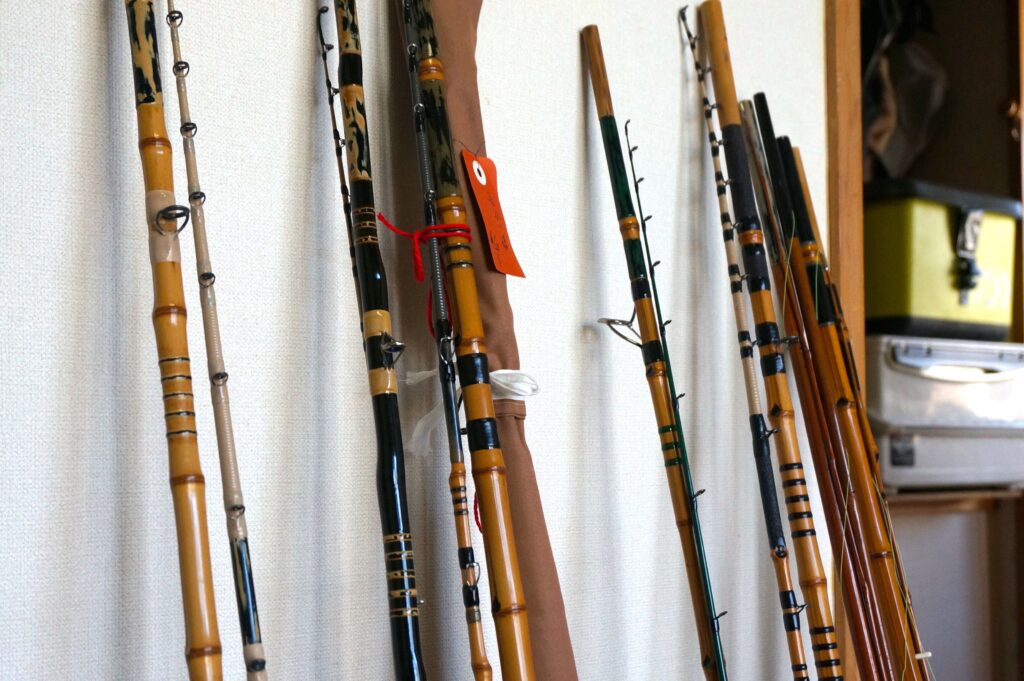
The art of making bamboo poles in Japan reflects a tradition of craftsmanship in harmony with nature. Each step in the process embodies the skill and dedication of the artisan, transforming the bamboo pole into more than just a functional tool—it becomes a piece of art.
